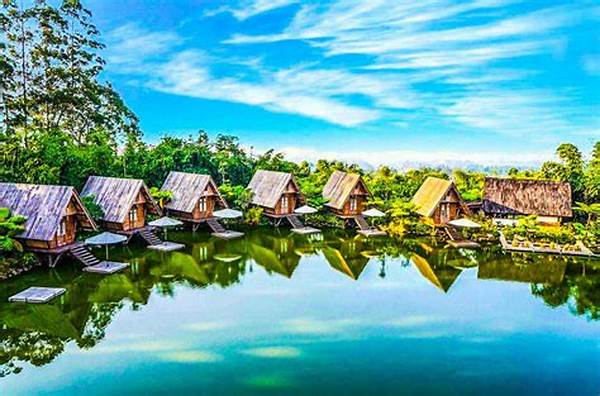Imagine escaping the hustle and bustle of city life and finding yourself amidst the serene beauty of a riverside park. The gentle rustle of leaves, the soft babble of the river, and the chirping of birds create a peaceful orchestra that soothes the soul. However, to fully indulge in this tranquility, the key is to travel light. Carrying bulky equipment can turn your idyllic day into a cumbersome ordeal. This article dives into clever tips to ensure you bring only what’s necessary and enjoy your riverside adventure with ease.
Read More : Affordable Glamping Near Natural Tourist Destinations In Yogyakarta 2025
In the ever-evolving world of trekking gear, choosing the right equipment that offers both utility and mobility can be an overwhelming endeavor. But fear not! Navigating this jungle of choices becomes fun when approached with a sense of curiosity and humor. Picture yourself setting out with a backpack that feels as light as a feather, thanks to strategic packing. Whether you’re a seasoned trekker or a curious newbie, learning the art of packing light can enhance your trekking experience. So, let’s discover the secrets to exploring riverside parks without the burden of heavy packs.
The Art of Light Packing: A Trekker’s Guide
Understanding Essential Versus Optional
When considering the tips for bringing light equipment when trekking in riverside parks, the first step is distinguishing between essential and optional items. Essentials are necessary for survival and comfort—think water, food, and protection from the elements. Optional items are those you might enjoy having but can live without. Ask yourself if each item in your pack serves a critical function or if it can be replaced with a multi-purpose tool.
Make a Checklist and Stick to It
Creating a checklist is an invaluable tactic for efficient packing. Draft a list focusing on essentials first. Items such as a lightweight tent or hammock, compact sleeping bag, hydration system, and high-energy snacks should top your list. The checklist serves not only as a packing guide but also helps you manage your physical load—preventing the addition of unnecessary weight during spontaneous packing decisions.
Opting for Multipurpose Gear
Another vital tip is to choose gear that serves multiple functions. For instance, a bandana can act as a sun hat, hand towel, or even as a sling in emergencies. A multi-tool can replace several single-function tools, keeping your backpack organized and lightweight. The best gear choices are those that enhance your experience while minimizing redundant loads.
Prioritize Weight and Space
The logic behind light packing derives from prioritizing both weight and space. Begin by packing the heaviest items closest to your back to maintain balance. Utilize packing cubes or compression sacks to minimize the space non-essential items take up. Remember, a lightweight pack translates to less physical strain, allowing you to enjoy the scenic views without unnecessary fatigue.
Detailed Insights on Efficient Trekking Packs
Deconstructing the Ideal Backpack
Footwear and Clothing Choices
The choice of footwear can significantly impact your trekking experience. Lightweight, waterproof shoes with good grip should be prioritized. As for clothing, moisture-wicking fabrics and layered outfits are recommended. They keep you comfortable in fluctuating weather conditions without adding extra weight.
Read More : Riverside Park Splash Pad And Water Play Areas
Food and Hydration Strategy
Packing high-energy, nutritious snacks such as trail mix, energy bars, and dried fruits sustains your energy levels without adding bulk. A lightweight water purification system like a filter or iodine tablets means you can safely refill water from natural sources, negating the need to carry excessive water supplies.
Points to Consider Before Packing
Safety and Weather Preparedness
Summary of Trekking Essentials
Mastering the art of light packing elevates your experience in riverside parks, allowing a seamless harmony with nature. By focusing on multifunctionality, necessary comforts, and adhering to thoughtful planning, you achieve a journey that’s liberating, not laborious. Remember, the magic lies in the minimalist approach—where each item is a valued companion, not a burden on your shoulders. Embrace the simplicity, immerse yourself in nature’s wonders, and let the riverside’s enchanting beauty unfold.
Taking these tips to heart cultivates an efficient and advantageous preparation for your next trek. Implement these insights for a memorable experience marked by clarity, lightness, and joy. Whether it’s the refreshing breeze along the river or the gems of wildlife you encounter, a lightweight pack ensures the essence of the journey isn’t lost amidst heaviness.



